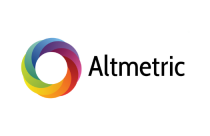Overcoming the Paywall Barrier Through Dissemin’s Green Open Access

Green open access (OA) makes research papers available through an OA repository. Although the peer-review process remains unchanged with regards to the traditional (subscription-based) publishing journals, a version of the published research paper is now accessible through green OA. Academic journals dictate which version of the paper can be accessed through green OA because they hold the rights to the final published version. Green OA should be distinguished from gold OA. In the former, an article becomes freely available in places other than the publisher’s website, such as a university repository or the researcher’s homepage.
Publishing through green OA involves a number of steps to publish articles in indexed repositories. Indexed repositories are storage sites for configuration files. When articles are submitted to indexed repositories, they are readily available for viewing in OA journals or hybrid journals. On the other hand, traditional publishing journals supporting paywall research provide access to published articles only after accepting a certain payment. Traditional publishing journals insist that they need to adopt this strategy to maintain content quality. Interestingly, recent developments in OA publishing, highlighted by the case of Alexandra Elbakyan, founder of Sci-Hub, have drawn the research community’s attention to academic journals. Subsequently, tools such as Dissemin, are now available for providing access to journal articles, in support of green OA.
An Open Access Tool Called Dissemin
Often, only metadata are available in subject repositories in libraries and institutions. Full-text versions are hidden behind a paywall that restricts access. The success of open policy depends on the number of publications in your own institutional archive. How do you measure success? Dissemin is a tool that can be used to measure just that.
Dissemin is an open source platform that analyzes publications from researchers and flags those which can’t be found in open repositories. This tool also provides a list of open access publishers for a given researcher as well as links to institutional repositories and publishers from where the article can be downloaded. It heavily encourages OA. The publisher’s policy is accessed and retrieved from SHERPA/RoMEO. It is then classified appropriately (fully OA, unclear policy, partial green OA, or deposit forbidden). These categories ensure that articles are properly indexed in databases.
The Objectives of Dissemin
Dissemin was created by the CAPSH association to encourage researchers to provide OA to their journals. The team that created Dissemin is headed by Antonin Delpeuch. Dissemin, which is a tool for self-archiving, was created in response to the exorbitant fees charged by traditional publishers for granting journal access. In addition, Dissemin provides a solution to the problem of restricting journal articles to metadata.
Dissemin offers several benefits to researchers. Publications gain increased visibility, which increases their relevance in the scientific community. Besides this, research gets disseminated at a faster pace because of the OA option. Journal articles also gain more impact and citations. Public good has also been cited as a benefit of Dissemin (researchers can easily access the latest research in their field). Authors who choose to use Dissemin also have more control over the use and re-use of their work. Subsequently, these lead to better reputations for authors and their institutions. Lastly, using Dissemin increases compliance with funder and Research Excellence Framework (REF) requirements.
How to Free Your Article from Paywalls
Dissemin allows researchers to liberate their articles from academic journals that have paywalls. The use of Dissemin eschews traditional publishing by contributing to all the factors that increase an article’s visibility. Paywalls are remnants of traditional publishing and though still relevant, they impede the citations that an article receives, thereby decreasing its impact. Dissemin can be used effectively by following these steps:
- Register or login to ORCID.
- Conduct a search for your article in the Dissemin database.
- Click the version that you want to deposit.
- Click again to deposit to either HAL or Zenodo (both of which are indexed repositories developed by CERN).
Anyone can access user-deposited articles from the Zenodo or HAL repositories. It is easy to use Dissemin, and more researchers should consider signing up to use this tool. Green OA is the publishing model of the future. Along with gold OA, this type of OA can be successfully used by researchers to boost research dissemination. The tool is easy to use and is free of charge. Dissemin should be used more often by researchers to increase the visibility of published research papers, thereby advancing science one step at a time.
Do you think Dissemin will increase the visibility of published work? Have you signed up for Dissemin? Please share your opinion by commenting in the section below.









